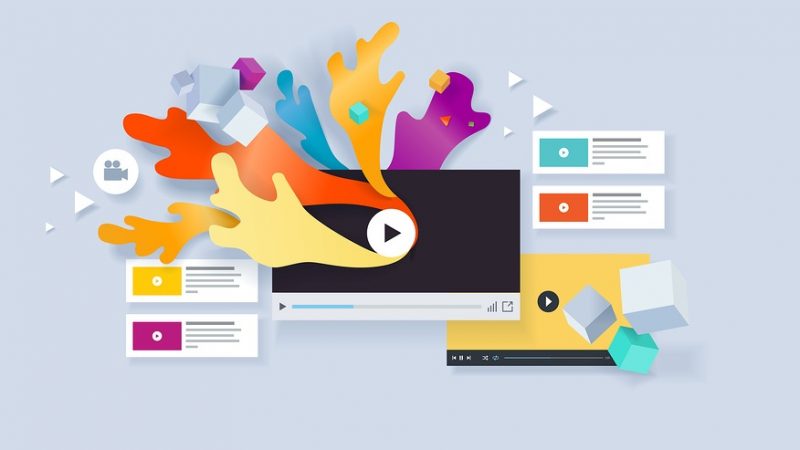Building a Resilient IT Framework: Best Practices for Businesses
In today’s digitally driven world, having a robust and efficient technology infrastructure is not just a luxury—it is a necessity for modern businesses. Vulnerable IT systems can put sensitive data at risk, while outdated hardware can slow down business operations and hinder productivity.
Implementing an IT framework can make all the difference, helping your business to regain control over its IT setup by providing structure and support. A resilient IT framework protects your company from cyber threats, ensures business continuity and boosts competitiveness.
But what exactly is an IT framework, and why is it so important for organisations seeking resilience in their IT operations? In this article we will examine the components of an IT framework and explore some of the best practices for businesses to design and maintain a scalable and resilient IT infrastructure.
What is an IT Framework?
Essentially, an IT framework is a blueprint for organising and managing a business’s IT infrastructure. It offers a set of guidelines and best practices that can help to organise and run IT systems effectively. By adhering to these standards, organisations can make sure that their technology is optimised and delivers the services they need, resulting in a more reliable IT operation.
With a better understanding of what an IT framework involves, let’s explore how it fits into the broader context of IT Service Management (ITSM).
ITSM
IT Service Management (ITSM) are the activities performed by a business to design, build, deliver, operate and control IT services to customers.
IT frameworks play a crucial role in ITSM by providing the structure and guidance required to successfully implement ITSM practices and streamline service delivery operations. Integrating IT frameworks into ITSM strategies helps organisations to establish standardised processes, improve service quality, enhance efficiency and align IT services with business objectives.
Popular IT Frameworks for Businesses
When looking to introduce a resilient IT framework, selecting the most suitable option for your business can be a challenge. Let’s explore some popular frameworks and how they can benefit your business:
- ITIL – a widely adopted framework for ITSM. ITIL provides a set of best practices and guidelines for managing IT services throughout their lifecycle and aligning them with business goals. The primary aim of ITIL is to improve the quality and efficiency of IT service delivery, enhance customer satisfaction and optimise resource utilisation. It offers a comprehensive framework of several key components, including service strategy, development, transition, operation and ongoing service improvement.
- COBIT – a popular framework with a focus on ensuring effective IT governance, risk management and compliance. COBIT aims to align IT activities with business goals, ensure efficient use of IT resources and maintain a high level of control over IT processes. Key features include defining clear roles, policies and procedures, implementing effective controls and ongoing monitoring and evaluation of IT processes using performance indicators and metrics.
- TOGAF – a globally recognised standard for developing and managing Enterprise Architecture. TOGAF provides a structured approach to designing, planning, implementing and governing Enterprise Architectures that align with business objectives and transformation. It is divided into several architectural domains, including business, data, application and technology. Each domain focuses on different aspects of the enterprise, providing a structured approach to address their unique requirements. TOGAF also emphasises the importance of stakeholder engagement, business alignment and ongoing architecture governance.
Integration With Other Frameworks
While each framework has its own unique focus and methodology, they can be combined to create a comprehensive approach to IT management. By leveraging their individual strengths, it ensures all aspects of your business’s IT infrastructure are covered.
These are just a few examples of IT frameworks that businesses may implement to manage their IT infrastructure and align it with their business goals. Depending on your company’s size, industry and objectives, you may choose to adopt one or more of these frameworks or develop your own customised approach. A dedicated IT support provider will be able to advise you on the best IT framework for your business and help you implement it.
So, what does a resilient IT framework look like?
5 Essential Components of a Resilient IT Framework
- High Availability
High availability allows an IT system or service to remain operational and accessible for users in the event of hardware failures or software glitches.
Duplicating critical components like servers, storage devices and network connections helps eliminate single points of failure, enhancing the reliability of the IT infrastructures. This ensures that if one component fails, there are backup systems in place to continue operations, helping to minimise disruptions, maintain productivity and uphold customer satisfaction.
- Data Backup and Disaster Recovery
Data backup involves creating duplicate copies of critical data and storing them in secure locations to prevent data loss in the event of hardware failures, cyber-attacks or other unforeseen incidents.
On the other hand, disaster recovery focuses on restoring IT systems and operations to normalcy after a disruptive event occurs. This typically involves implementing processes, procedures and technologies to quickly recover data, restore systems and resume business operations with minimal downtime.
By prioritising robust data backup and disaster recovery strategies, organisations can protect their valuable data, minimise disruptions and maintain continuity during unexpected disasters or emergencies.
- Scalability
Scalability is crucial for ensuring your IT infrastructure can handle increasing workloads and accommodate growth without sacrificing performance or reliability. It involves implementing systems and architectures, like cloud platforms, that can easily scale up or down in response to changing demands.
Scalability means your business can effectively meet evolving demands and maintain high levels of performance and availability while optimising resource efficiency and minimising costs.
- Cybersecurity Measures
Implementing cybersecurity measures protects your business against cyber threats, safeguards critical assets and upholds the trust and confidence of your customers and stakeholders. These measures may include installing firewalls, intrusion detection systems and antivirus software to safeguard from malicious activities.
Additionally, encrypting sensitive data, implementing access controls and conducting regular security audits are essential practices to mitigate security risks.
Proactive Monitoring and Incident Response
Proactive monitoring of IT systems, networks and applications identifies any anomalies or suspicious activities before they escalate. These practices include real-time monitoring of performance metrics, system logs and network traffic patterns to detect potential issues and vulnerabilities.
In the event of an incident, a robust incident response plan will kick into action, outlining predefined procedures for containing, investigating and resolving security breaches or operational disruptions.
Integrating proactive monitoring and incident response procedures minimises the impact of disruptions, reduces downtime and maintains the availability of a business’s IT infrastructure and services.
Best Practices for Businesses
- Risk Assessment and Planning – Conduct a thorough risk assessment to identify potential vulnerabilities and threats to your IT infrastructure. Develop a comprehensive plan to mitigate these risks and establish protocols for responding to security incidents and disruptions.
- Regular Updates and Patch Management – Stay proactive in updating software and security patches to address vulnerabilities and strengthen your defences against potential threats. Implement a robust patch management system to ensure routine updates across all devices and systems.
- Employee Training and Awareness – Invest in employee training and awareness programs to educate staff about cybersecurity best practices, such as password hygiene, phishing awareness and data protection protocols.
- Documentation – Maintain thorough documentation of various aspects of IT infrastructure, procedures and policies. Document IT assets, network diagrams, configuration settings and operational procedures to ensure consistency, simplify troubleshooting processes and help with faster recovery following disruptions or disasters.
Final Thoughts – Tailored Solutions for Your Business
An IT framework plays a crucial role in organising and managing the processes within an organisation’s IT infrastructure efficiently. With the complexity and scale of IT operations, implementing such a framework ensures that IT services are structured and managed effectively to align with overarching business goals and objectives.
If you feel that your company needs assistance in assessing, building or enhancing your IT framework, an expert IT support provider will be able to advise on the best solutions for your business.
To find the best IT support provider in your area, do some research with a keyword search to get the names of reputable and recommended companies. For example, try ‘IT framework solutions Devon’ or ‘IT strategy support Cornwall’ to find a company near you.
Speak to them about what you need from your IT framework and talk through how they can help you to create a bespoke strategy for your business.
Follow techr for more!





